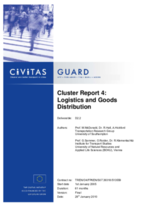New approaches to integrated planning: Alexander Master Plan
Summary
The measure was designed to demonstrate the benefits of integrated approaches to urban planning at traffic and transport nodes at three city centre locations.
Implementing sustainable mobility
The development of public areas combining several functions has been addressed in several policy documents, in particular the Rotterdam Plan for Spatial Development. This measure developed a new approach to integrated planning for three strategic transport interchanges: Alexander, Kralingse Zoom and Ahoy-Zuidplein.
The Alexander railway station is located near bus and metro lines, a large shopping centre, a park and ride facility and several leisure facilities, including a newly built cinema at the time of measure implementation. The immediate objective of this measure was therefore to develop a master plan for the area, taking into account its mixed functions and growing economic activity.
Progress
The overall master plan was drawn up in 2002 and describes how an area around the transport node with a low building density could be transformed into a lively suburban centre. The focus was on combining economic functions close to transport infrastructure, taking into account restrictions on accessibility, external safety and traffic related air and noise pollution. The initial emphasis was on a smaller area in the eastern part of Alexander, for which a short-term, more detailed master plan was drawn up by the city council.
Outcomes
Cooperation between government and private partners proved to be an important driver for the acceptance of the project, although acceptance among residents was high due to the obvious benefits for them (e.g. shopping facilities). However, the actual implementation of the integrated planning processes requires several years and lies well outside the scope of the TELLUS project. In general, it is not easy to assess the impact of “soft measures”: although aimed at improving traffic conditions by reducing congestion, it is not possible to relate actual impacts with the measure of integrated planning. Nevertheless, one positive impact of the measure was the fact that all stakeholders were involved in the long-term planning, contributing to smoothing the complex processes.








